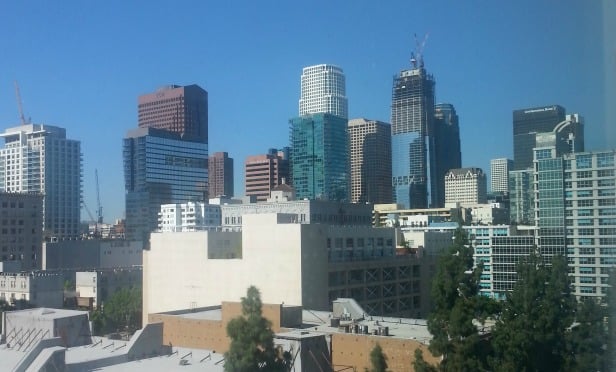 Riverside County is among the fastest growing counties in the country. Last year, the county added 33,000 residents, a population increase of 1.1%, according to research from JLL. The growth landed the market as the fifth fastest growing county in the country. The population growth is largely due to migration out of Los Angeles as Californians search for more affordable housing.
Riverside County is among the fastest growing counties in the country. Last year, the county added 33,000 residents, a population increase of 1.1%, according to research from JLL. The growth landed the market as the fifth fastest growing county in the country. The population growth is largely due to migration out of Los Angeles as Californians search for more affordable housing.
“While Riverside County made headlines for its relatively strong population growth in 2018, Los Angeles County ranked fourth in terms of the nation's most populous counties losing people in 2018,” John Sheaffer, senior analyst at JLL, tells GlobeSt.com. “Riverside continues to gain residents as the housing crisis in coastal housing markets intensifies. The housing market in LA County is both expensive and severely undersupplied, specifically on the lower end of the pricing spectrum. And renters living in Riverside County pay roughly $1,000 less per month than those in LA County, on average. Additionally, the logistics industry in the Inland Empire has exploded since the recession, with the rise of e-commerce. Major retailers are expanding their distribution networks, adding large fulfillment centers and bringing thousands of new jobs to the area in the process. The job growth has fueled both population growth and the need for additional housing.”
The Inland Empire in general has seen strong population growth as a result of the exodus from Los Angeles. Neighboring San Bernardino County also saw healthy population growth last year. “Both Riverside and San Bernardino Counties experienced gains in 2018, which doubled the State's annual population growth rate. Riverside County—with more available, developable land than in San Bernardino County—will likely draw the bulk of residents migrating out of Los Angeles County in the near future,” says Sheaffer.
Recommended For You
Want to continue reading?
Become a Free ALM Digital Reader.
Once you are an ALM Digital Member, you’ll receive:
- Breaking commercial real estate news and analysis, on-site and via our newsletters and custom alerts
- Educational webcasts, white papers, and ebooks from industry thought leaders
- Critical coverage of the property casualty insurance and financial advisory markets on our other ALM sites, PropertyCasualty360 and ThinkAdvisor
Already have an account? Sign In Now
*May exclude premium content© 2025 ALM Global, LLC, All Rights Reserved. Request academic re-use from www.copyright.com. All other uses, submit a request to [email protected]. For more information visit Asset & Logo Licensing.








